Abstract
Belaïch, Jean-Pierre (Centre National de la Recherche Scientifique, Marseille, France), and Jacques C. Senez. Influence of aeration and of pantothenate on growth yields of Zymomonas mobilis. J. Bacteriol. 89:1195–1200. 1965.—The growth yields and rates of Zymomonas mobilis were measured in aerobic and anaerobic cultures on glucose medium containing yeast extract, amino acids, or ammonium chloride as the nitrogen source. In the absence of yeast extract, pantothenate was required. The growth yield and rate of the cultures in synthetic (amino acids) or minimal (NH4Cl) medium supplemented with pantothenate corresponded only to about one-half the “normal” values obtained in the presence of yeast extract, suggesting a situation of energetically uncoupled growth. Attempts to restore normal growth by the addition of various compounds were unsuccessful. Aeration of the cultures resulted in a partial oxidation of ethyl alcohol to acetate, but did not modify the growth yield nor the division time. Both aerobic and anaerobic cells, however, contained cytochrome c and a cytochrome oxidase of the a2 type, which was completely inhibited by 10−4m cyanide. In anaerobically grown cells, an additional cytochrome of the b type was present. The absence of a Pasteur effect suggests that the transfer of electrons by the respiratory chain of Z. mobilis may not be coupled with oxidative phosphorylation. Aeration had no effect on the catalase content of the cells. As shown by C14-glucose incorporation, 2 to 3% of the glucose metabolized was assimilated by the cells in both synthetic and rich complex medium. No intracellular glycogen nor poly-β-hydroxybutyrate was accumulated when growth was limited by nitrogen or by phosphate in the presence of excess glucose.
Full text
PDF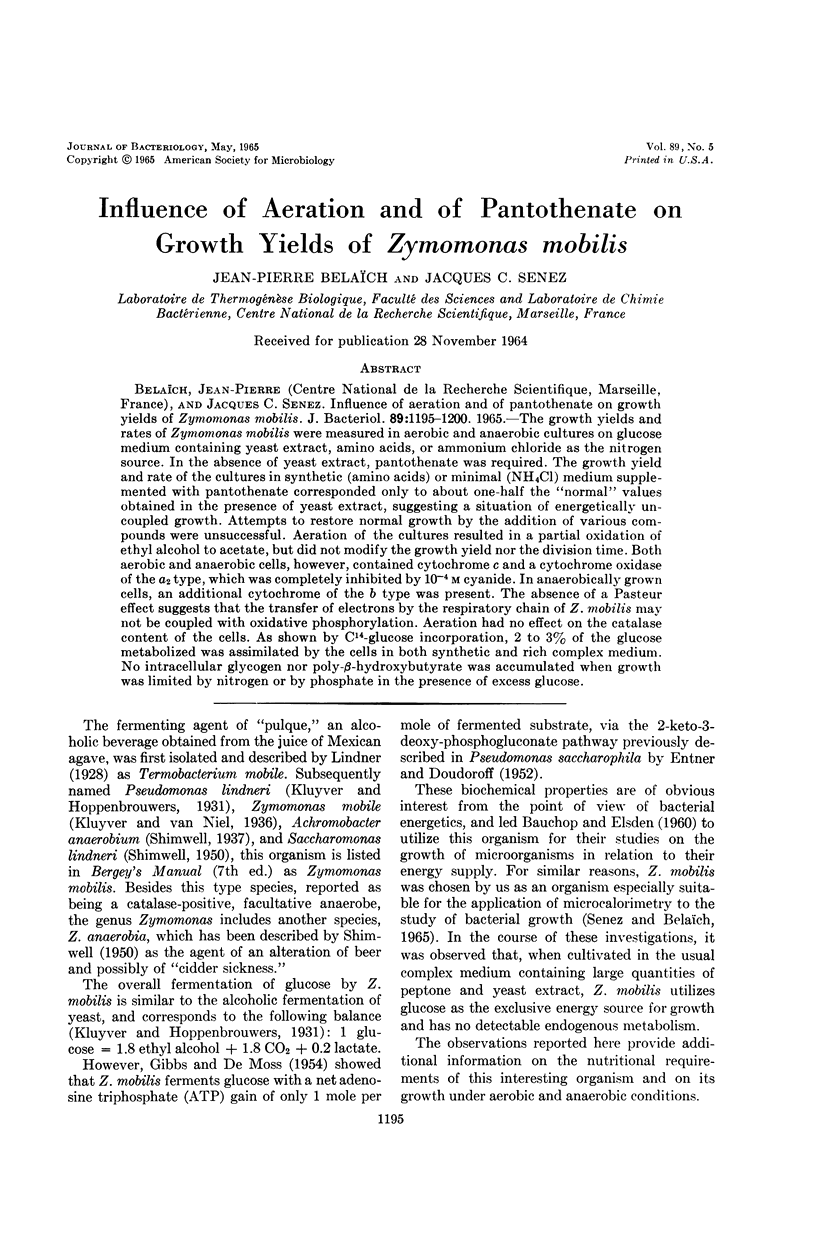
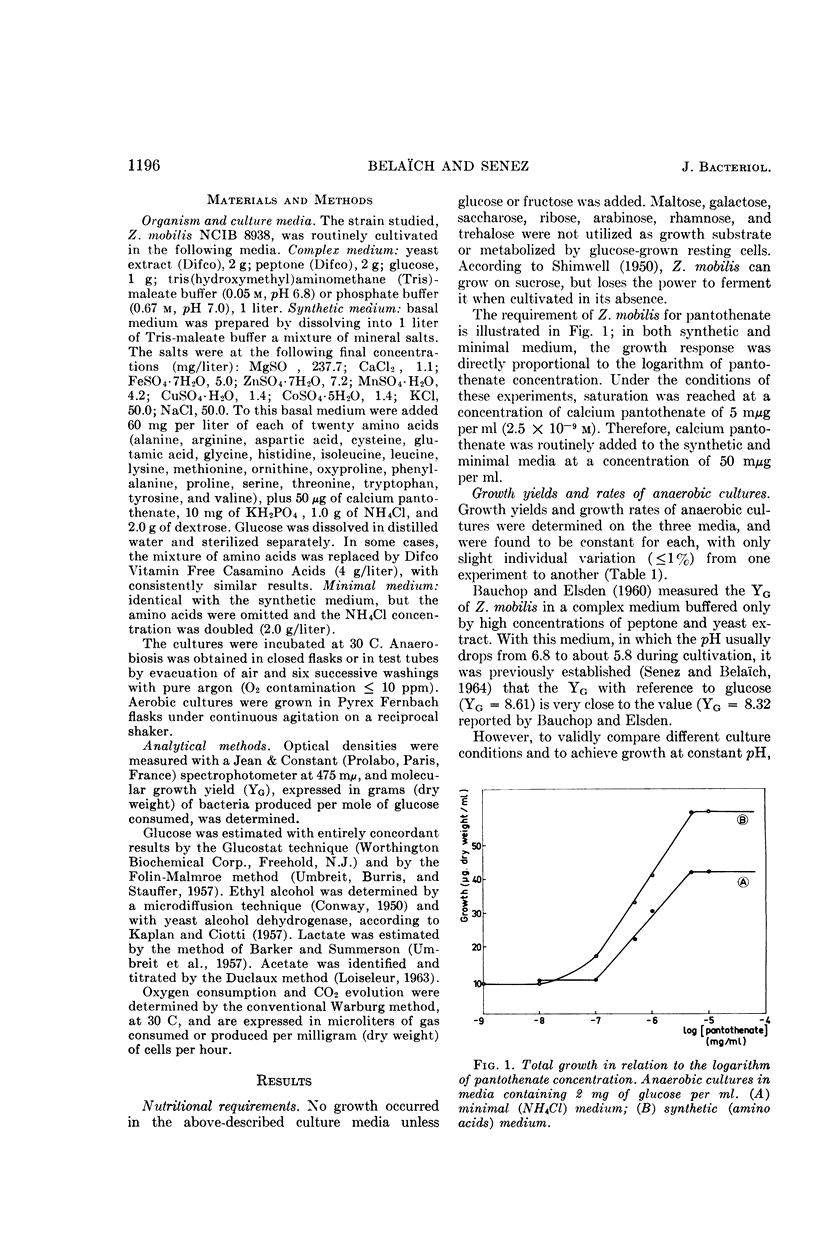
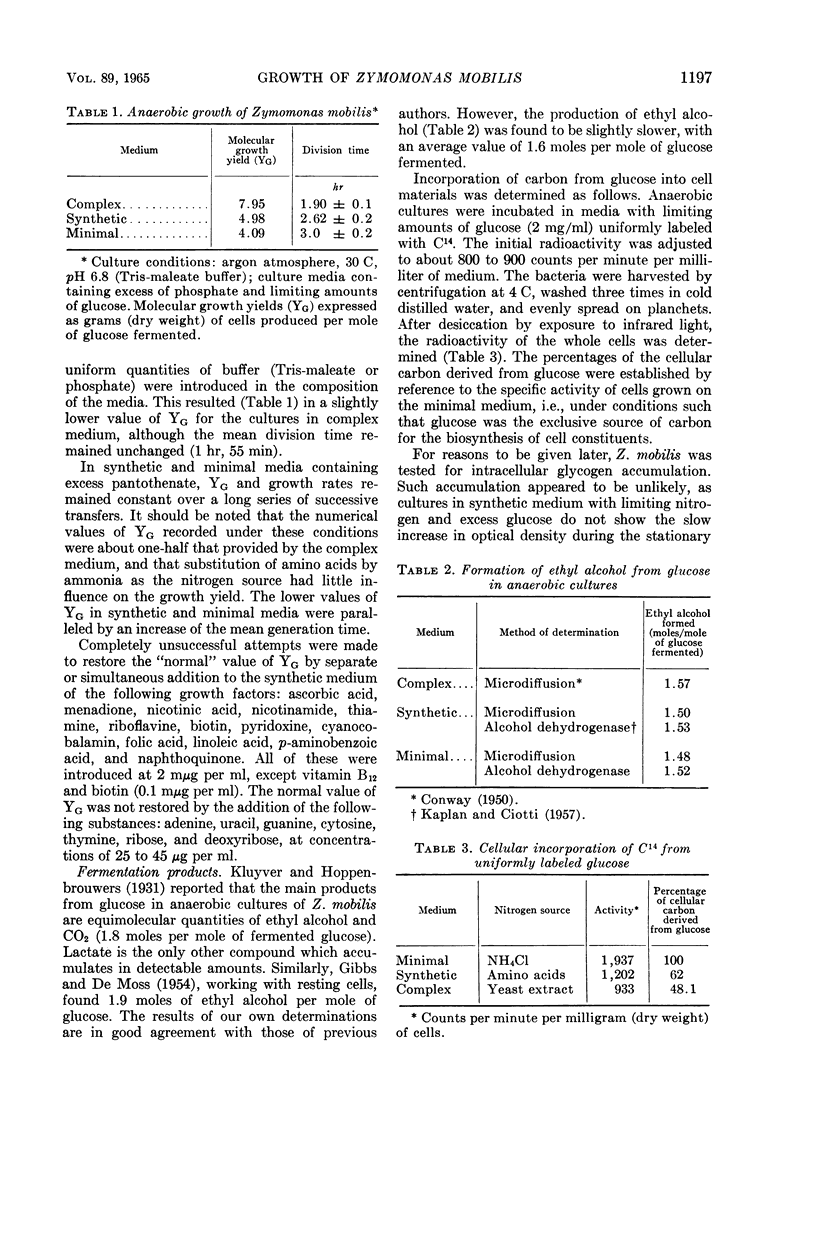
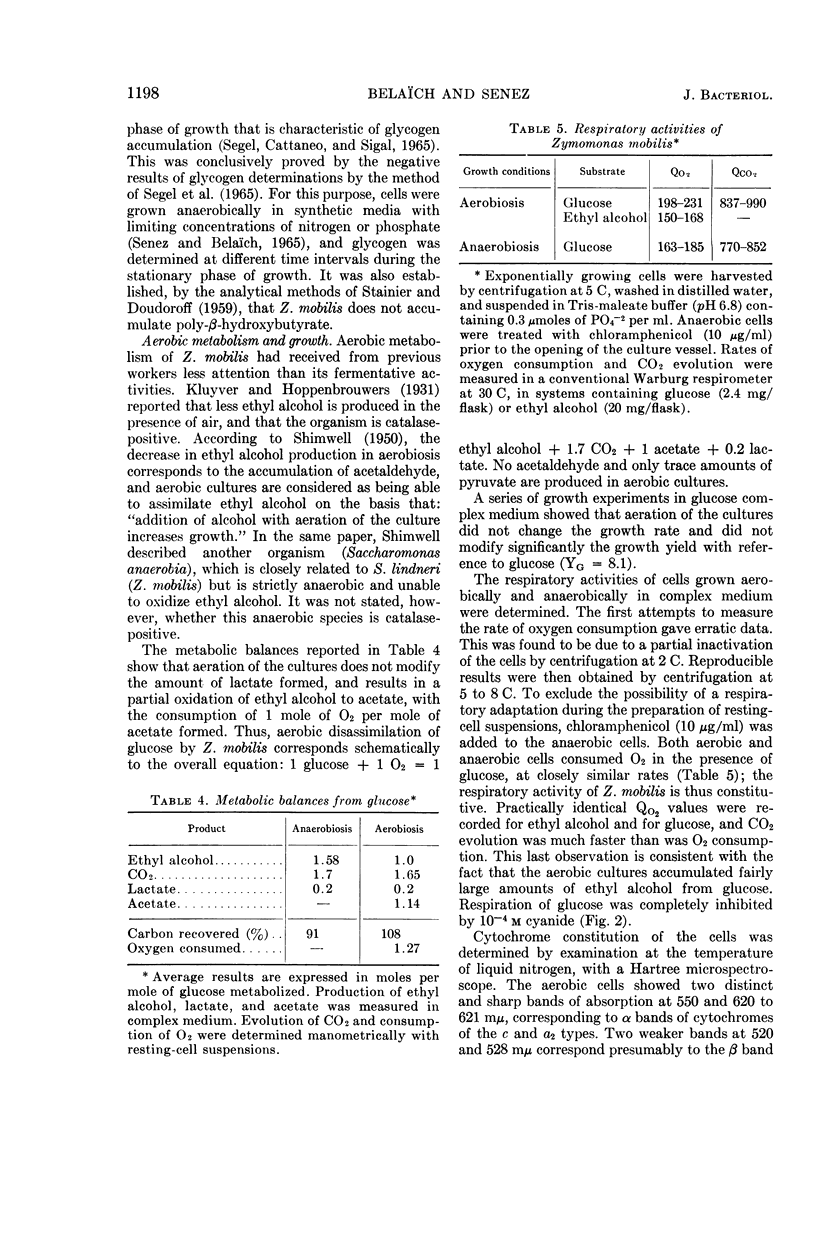
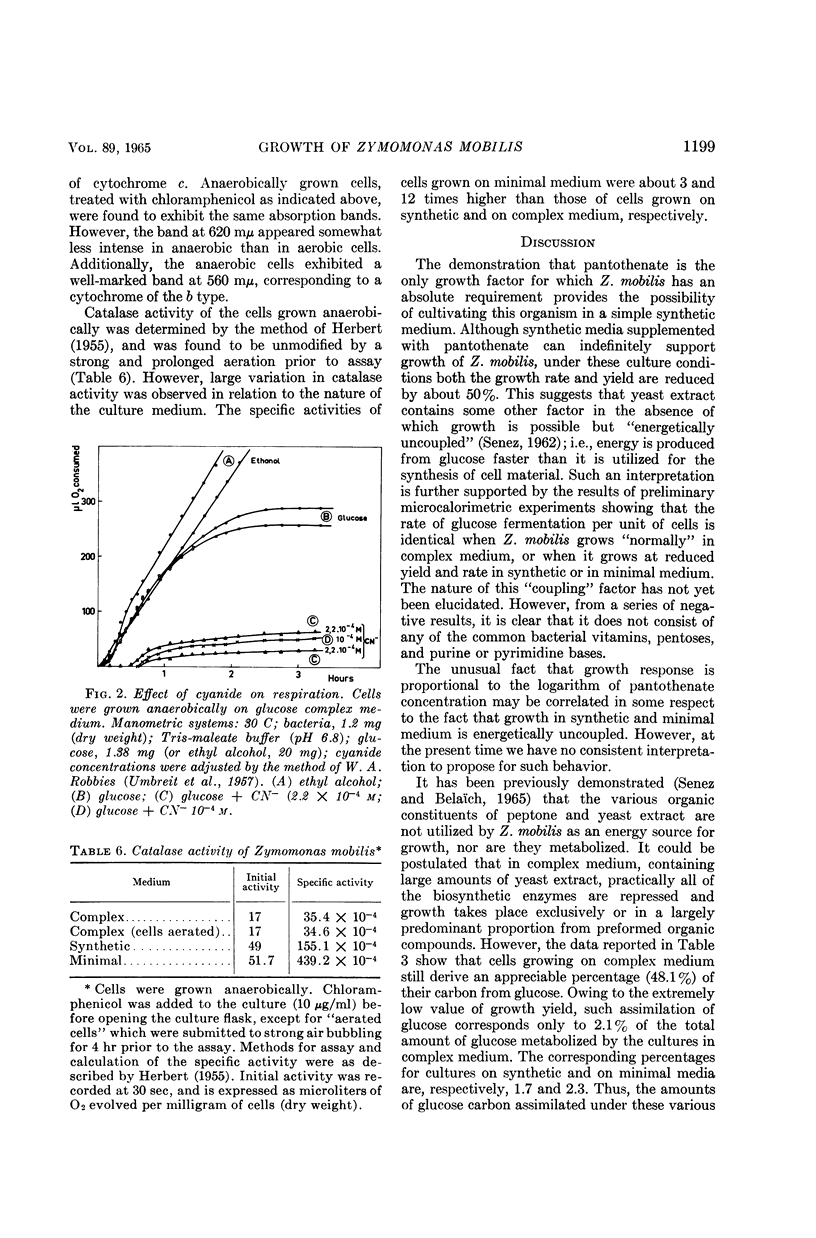
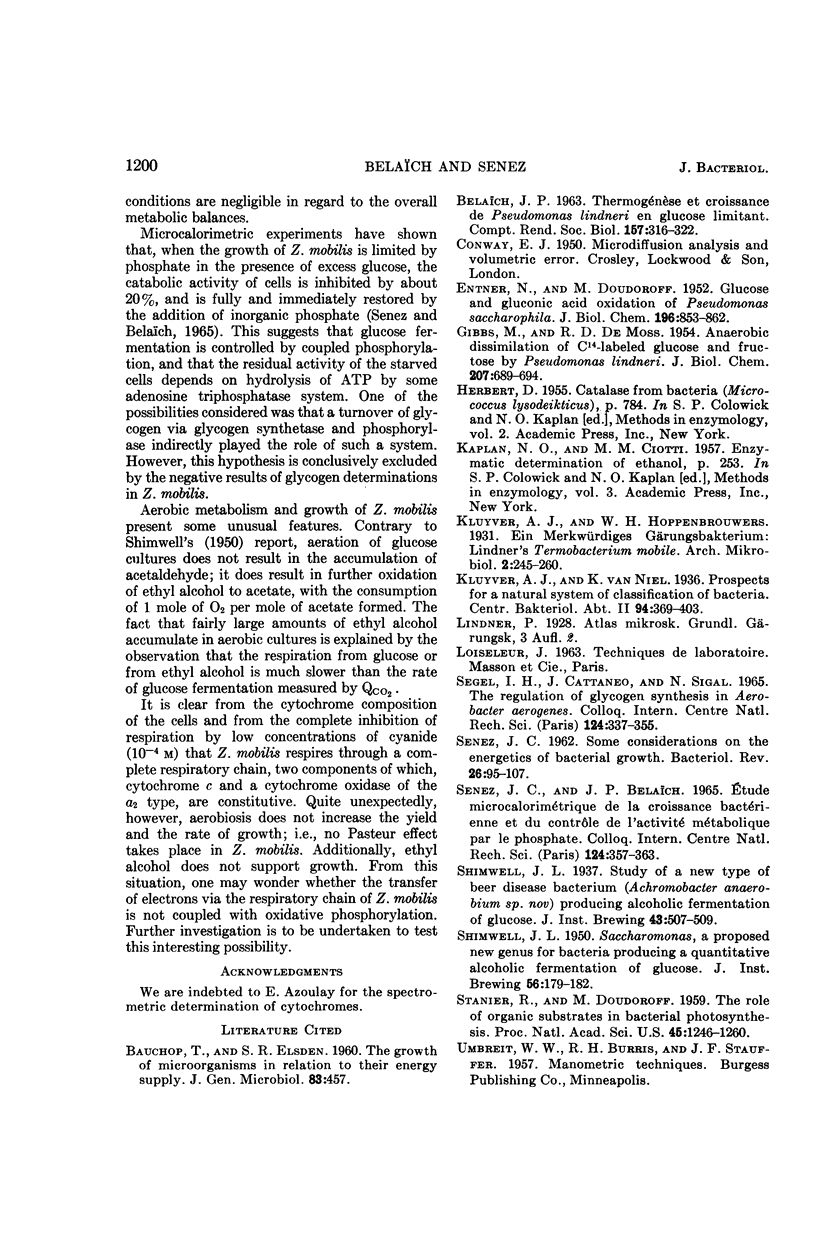
Selected References
These references are in PubMed. This may not be the complete list of references from this article.
- BAUCHOP T., ELSDEN S. R. The growth of micro-organisms in relation to their energy supply. J Gen Microbiol. 1960 Dec;23:457–469. doi: 10.1099/00221287-23-3-457. [DOI] [PubMed] [Google Scholar]
- BELAICH J. P., PRAT H. [Glucose-limiting thermogenesis and growth of Pseudomonas lindneri]. C R Seances Soc Biol Fil. 1963 Jun 10;157:316–322. [PubMed] [Google Scholar]
- ENTNER N., DOUDOROFF M. Glucose and gluconic acid oxidation of Pseudomonas saccharophila. J Biol Chem. 1952 May;196(2):853–862. [PubMed] [Google Scholar]
- GIBBS M., DEMOSS R. D. Anaerobic dissimilation of C14-labeled glucose and fructose by Pseudomonas lindneri. J Biol Chem. 1954 Apr;207(2):689–694. [PubMed] [Google Scholar]
- SENEZ J. C. Some considerations on the energetics of bacterial growth. Bacteriol Rev. 1962 Jun;26:95–107. [PMC free article] [PubMed] [Google Scholar]
- Stanier R. Y., Doudoroff M., Kunisawa R., Contopoulou R. THE ROLE OF ORGANIC SUBSTRATES IN BACTERIAL PHOTOSYNTHESIS. Proc Natl Acad Sci U S A. 1959 Aug;45(8):1246–1260. doi: 10.1073/pnas.45.8.1246. [DOI] [PMC free article] [PubMed] [Google Scholar]


